So you wanted to know what’s in the little box? Well, to answer that I have to backtrack a few months.
The Peacock Dress was on loan to the Museum of London for most of its lifetime, from at least the 1930s to the 1990s. My interest was piqued when a contact at the Museum told me that they still have “a file” on the dress. Intriguing…
So a new part of the story develops: what happened to the Dress after the ball?
Lady Mary Curzon died young. In fact, she was gone just three years after that glittering night in Delhi, at the pitifully young age of 36. The grieving Lord Curzon built her a tomb at Kedleston – even though he married again, he lies next to her there to this day – and commissioned the famous portrait of her in her dazzling Peacock Dress.
Her dresses were the only possessions that were passed directly to Mary’s three daughters (she is reputed to have asked specifically for the “feathers dress” to be kept), and we pick up the story in 1938, with a series of letters that passed between the eldest daughter, Baroness Irene Ravensdale, and the Director of the Museum of London.
They certainly did keep the dress, but lent it to the Museum, during which time the Baroness arranged for the dress to be displayed in an exhibition at the Metropolitan Museum in New York. (It was the first of two appearances; the dress was lent again in 2004.) One can sense her pride in her mother’s achievements shining through, not only in these early letters, but in the rather different missive that crashed onto the Director’s desk in the early 1950s.
After a hiatus of around ten years, the Baroness launched an angry tirade on the poor Director. She had visited the dress on its first display after the war and discovered it to be in much worse condition than she remembered. She declared it to be tarnished and tired-looking. She accused the Museum of neglect, and rather than her usual simple “Ravensdale”, she signed the letter “Baroness Irene Ravensdale, daughter of Mary Curzon, Vicereine of India.”
She was mightily pissed off, and wouldn’t you be? You entrusted a unique and highly valuable family heirloom, not to mention an artifact of international significance, to the experts, and look what had happened!
The Director gently explained the situation. The dress had been stored as carefully as possible under the circumstances during wartime, and the damage was not a result of neglect, but of the natural deterioration of metallic embroidery on a decades-old silk dress. He had a similar problem with Queen Alexandra’s coronation gown, he said, which was of a similar style, age, and ornamentation, and was now too fragile for display at all. This was simply par for the course with historic textiles.
It seems that the Baroness understood; her next letter offered help. Was there anything she could pay for? Any way to refresh the roses at the hem perhaps, or otherwise conserve the dress?
There the letters end, but the next few slips of paper in the file are scribbled shopping lists; it seems that they did come to an arrangement. Hooks and eyes, “v fine off white nylon net”, “petersham belting”, “prussian binding”, “sewing silk” are listed with associated estimated prices in pounds, shillings and pence. Taffeta, poplin, tulle – they did quite a bit of work, it seems – and at the bottom of the list, “100 white roses”.
The roses we see today on the Peacock Dress, then, are not original.
Last week, this was the point in the story when Ffion became terribly excited. They have a box they’d been wondering about, and I’d just given them the backstory without even realising it. She took me behind the public route through Kedleston Hall, through dark corridors and up endless flights of stairs, behind a great door into rooms that were surely once grand guest bedrooms. Among piles of dusty bins and boxes, she took out a small cardboard container.
On the lid was the distinctly 1950s logo of Reslaw Hats, the typed address of the Museum of London costume stores, and a scribbled note reading “Proposed new rosettes for Peacock Dress.”
Inside are the following items.
A pristine (if a little squashed) white fabric rose with a Reslaw label. Clearly the resourceful ladies of the Museum of London had concluded that a milliner was their best bet for replacement fabric flowers. But that’s not all. There are also four other roses that look distinctly older and tireder…. which, we conjecture, must have been sent to Reslaw for reference purposes. These, we think, are the original roses from the Peacock Dress.
What a find! So fragile, and so beautiful, and it looks as though Reslaw Hats did a great job of replicating the original look. But it does make you wonder… what did they look like brand new, pre-squashing? If I’m going to recreate the Peacock Dress as-new, I’m going to need a little more than this. But that’s another post…

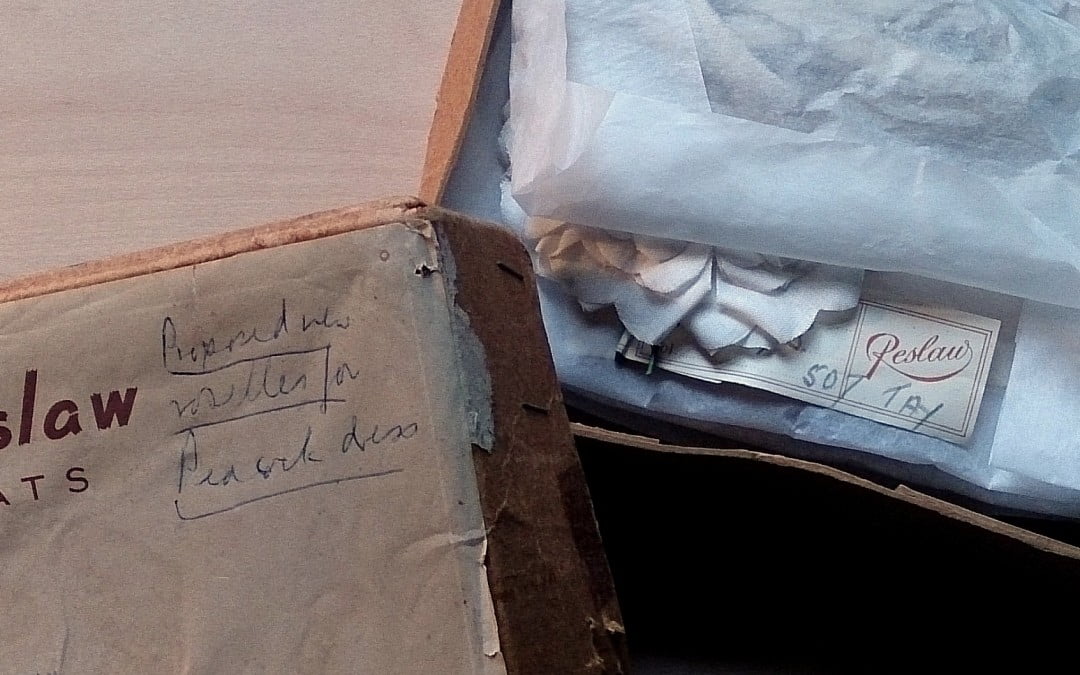


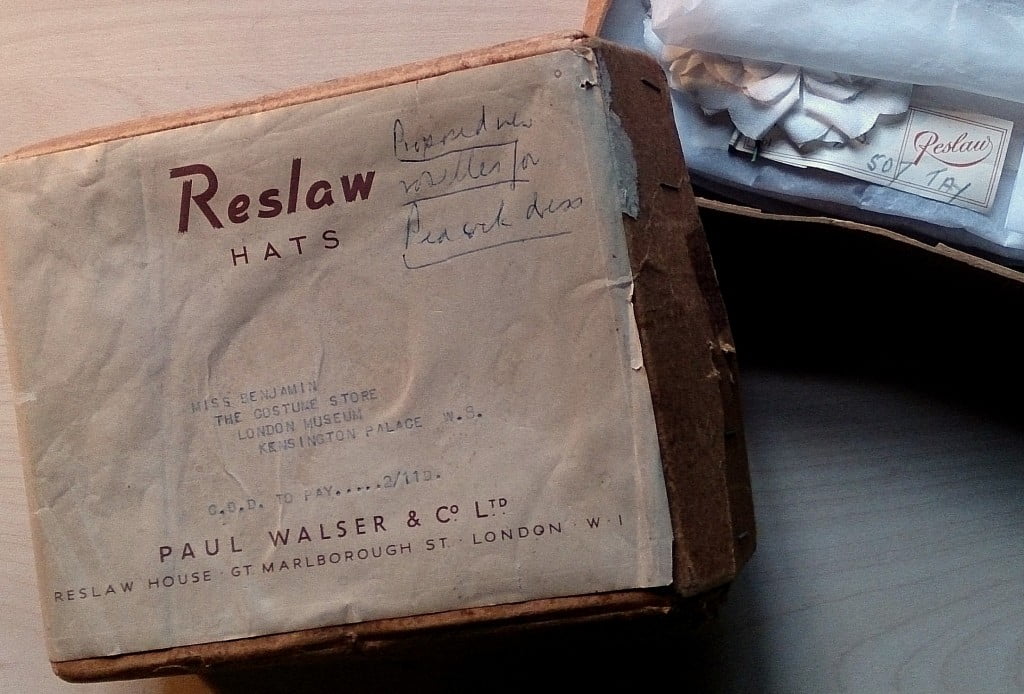
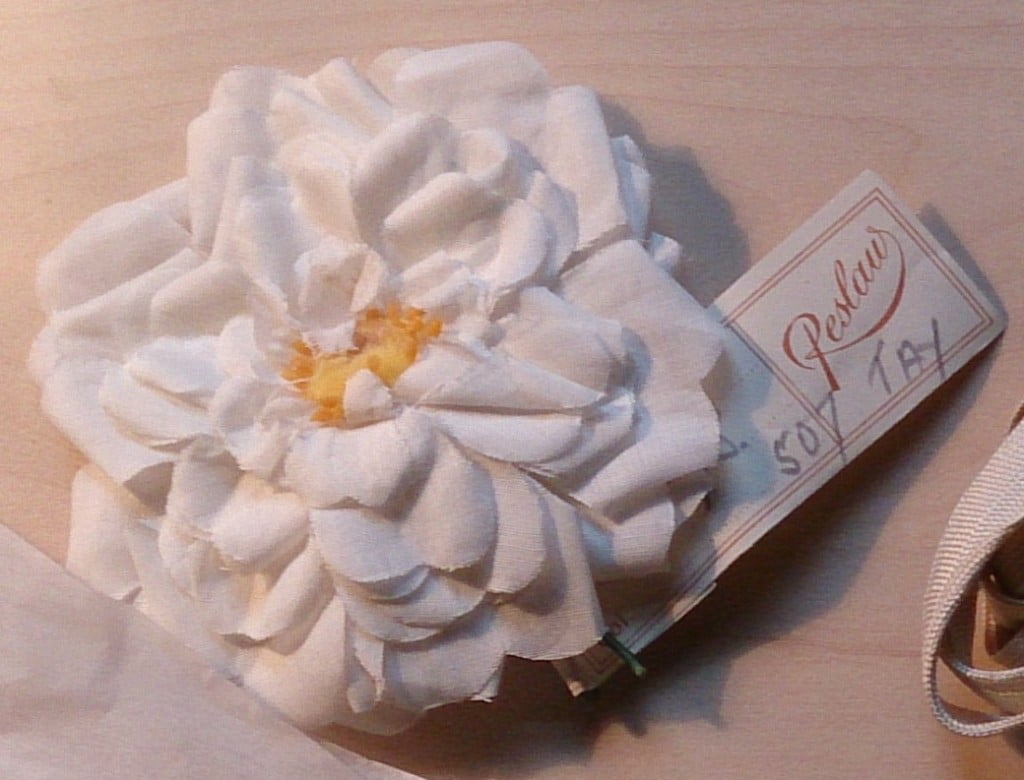
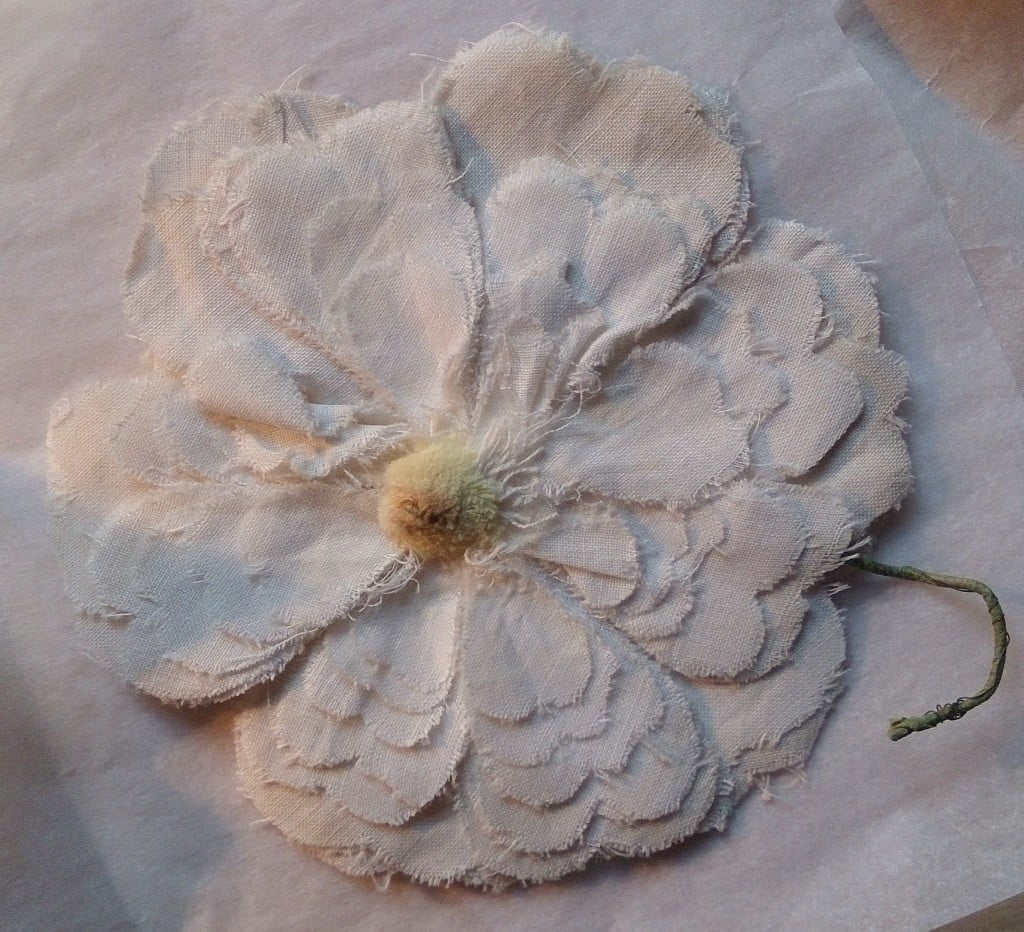

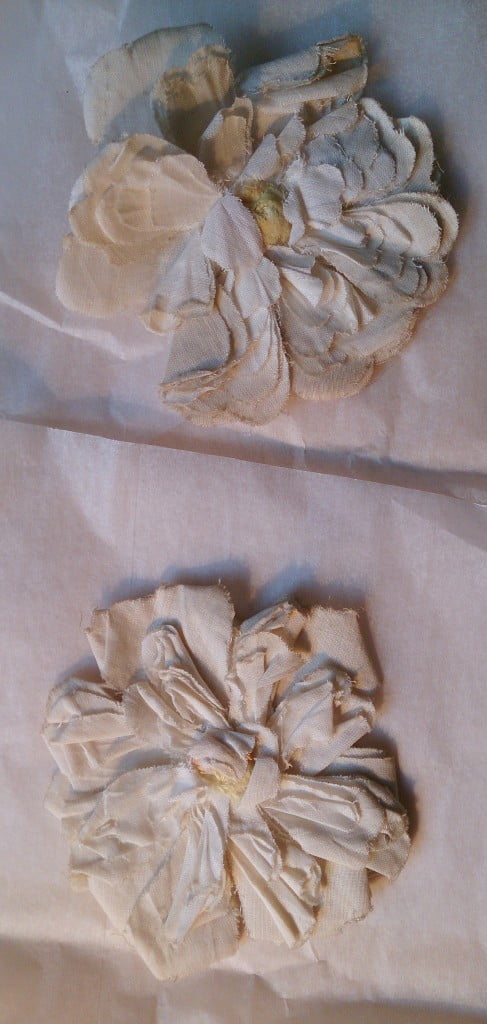
A lovely story. Looking forward to more xx
Brilliant! There’s an amazing thrill to finding something like this in collections. What a great discovery and a great lead to where to get new ones made – a milliner!